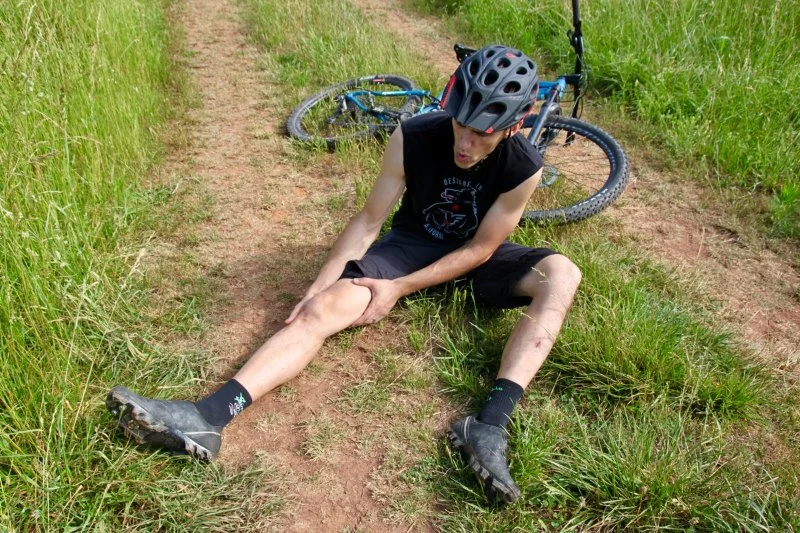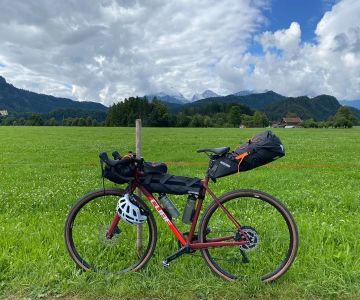
- 1 - Understanding Muscle Cramps During Climbs
- 2 - Why Muscle Cramps Happen During Long Climbs
- 3 - How to Avoid Cramping During Long Climbs
- 4 - The Importance of Hydration and Nutrition
- 5 - Stretching and Strengthening to Prevent Cramps
- 6 - When to Seek Professional Help for Cramping Issues
1. Understanding Muscle Cramps During Climbs
Muscle cramps are a common challenge faced by cyclists, especially during long climbs. These painful, involuntary contractions can strike unexpectedly, often hindering performance and making a long ride more difficult. Understanding the causes of muscle cramps and how to manage them effectively can make all the difference in ensuring a smooth ride, especially when tackling steep inclines.
Muscle cramps are typically a result of fatigue, dehydration, or nutrient imbalances, and they often occur in the muscles most engaged during strenuous activities, such as your calves, thighs, and hamstrings. In this article, we’ll explore the reasons why cramps occur during long climbs and offer practical tips to prevent them from disrupting your ride.
2. Why Muscle Cramps Happen During Long Climbs
Understanding the root causes of muscle cramps during long climbs is crucial in preventing them. Here are some common factors that contribute to cramping:
2.1 Dehydration
One of the most common causes of muscle cramps is dehydration. When you ride for extended periods, especially during long climbs, your body loses fluids through sweat. If these fluids aren’t replenished, your muscles can become more prone to cramping. Dehydration disrupts the balance of electrolytes, which are vital for muscle function, leading to painful spasms.
2.2 Electrolyte Imbalance
Along with water, your body loses essential electrolytes like sodium, potassium, and magnesium during physical exertion. These minerals play a crucial role in muscle contraction and relaxation. An imbalance in electrolytes can trigger cramps, especially when you’re pushing hard up a long climb. Ensuring you maintain an adequate balance of these minerals can help prevent muscle spasms.
2.3 Overexertion and Fatigue
Overexertion, especially when climbing steep inclines, is another key factor that contributes to muscle cramps. As your muscles become fatigued from continuous effort, they may become more susceptible to cramping. Pushing your body too hard without proper rest or recovery can lead to muscle strain, making cramping more likely.
2.4 Poor Training or Lack of Stretching
Inadequate training or lack of flexibility can also increase the risk of cramps. If your muscles aren’t accustomed to the strain of long climbs or lack proper flexibility, they’re more likely to tighten up and cramp. Building strength and flexibility through regular training can significantly reduce your chances of cramping during climbs.
3. How to Avoid Cramping During Long Climbs
Preventing cramping during long climbs is possible with the right preparation and strategies. Here are several tips to keep your muscles cramp-free:
3.1 Pace Yourself
One of the most important things to remember during long climbs is to pace yourself. Trying to tackle the entire climb at full intensity can quickly lead to fatigue and cramping. Instead, focus on maintaining a consistent, moderate pace that allows your muscles to engage without overworking them. Gradually increasing your intensity as you build strength will help your body adapt to the demands of climbing.
3.2 Stay Hydrated
Proper hydration is essential for preventing cramps. Make sure to drink plenty of water throughout your ride, and consider using electrolyte drinks to replenish lost minerals. Avoid waiting until you’re thirsty to drink, as thirst is often a sign that dehydration has already begun. Drink small amounts regularly to maintain hydration levels.
3.3 Use Electrolyte Supplements
Electrolyte supplements, such as sports drinks or electrolyte tablets, can help maintain the right balance of minerals in your body. These supplements can help prevent muscle cramps by ensuring that your muscles have the necessary nutrients to function properly. Consider using electrolyte-rich drinks or snacks during your ride, especially during long climbs when you’re at a higher risk of depletion.
3.4 Warm Up and Stretch
Warming up and stretching before a long climb is crucial for preparing your muscles and reducing the risk of cramping. Focus on dynamic stretches that target your legs and hips, such as lunges, leg swings, and calf raises. After your climb, be sure to cool down with static stretches to help maintain flexibility and prevent muscle tightness.
3.5 Take Breaks and Rest
During long climbs, it’s important to listen to your body and take breaks when needed. Resting for short periods allows your muscles to recover and reduces the risk of cramping. If you feel a cramp starting, stop and stretch the affected muscle to relieve the tension. Don’t push through the discomfort; a short rest can prevent a more severe cramp from occurring.
4. The Importance of Hydration and Nutrition
Proper hydration and nutrition are crucial elements of preventing cramps. When you’re climbing for extended periods, your body needs fuel to maintain performance and avoid muscle fatigue. Make sure to consume a balanced diet that includes a good mix of carbohydrates, proteins, and healthy fats. Focus on pre-ride meals that provide long-lasting energy, such as whole grains, lean protein, and plenty of fruits and vegetables.
In addition to hydration and nutrition, consider incorporating electrolyte-rich snacks like bananas, oranges, or salted nuts into your ride. These foods will help replenish lost minerals and keep your muscles functioning optimally during long climbs.
5. Stretching and Strengthening to Prevent Cramps
Building strength and flexibility through targeted exercises can help prevent cramps, particularly during long climbs. Here are some tips for strengthening and stretching your muscles to improve your performance and reduce cramping:
5.1 Strengthen Key Muscles
Incorporate strength training exercises that target the muscles you rely on for climbing, such as your calves, quadriceps, hamstrings, and glutes. Squats, lunges, calf raises, and leg presses are great exercises for building strength in these areas. Stronger muscles are less likely to fatigue and cramp during long climbs.
5.2 Stretch Regularly
Regular stretching helps maintain flexibility and prevents muscles from tightening up, which can lead to cramps. Focus on stretching your legs, hips, and lower back before and after your climbs. Use static stretches to lengthen the muscles and reduce the risk of cramping.
6. When to Seek Professional Help for Cramping Issues
If you continue to experience frequent or severe cramping despite taking preventive measures, it may be time to seek professional help. A sports medicine specialist or physical therapist can assess your muscle function and offer personalized advice on improving your technique, flexibility, and strength. They may also be able to identify underlying issues that are contributing to the cramping.
If you’re looking for cycling tips, gear, or nutrition advice to enhance your performance and reduce cramping, visit Cycling Guider. We offer expert recommendations on the best cycling products and resources to help you tackle any climb with confidence.







 Coral Way Bike Shop4.0 (176 reviews)
Coral Way Bike Shop4.0 (176 reviews) DANIELS BIKE SHOP 5 LLC.5.0 (5 reviews)
DANIELS BIKE SHOP 5 LLC.5.0 (5 reviews) Fair Wheel Bikes4.0 (275 reviews)
Fair Wheel Bikes4.0 (275 reviews) Bicycle Central4.0 (110 reviews)
Bicycle Central4.0 (110 reviews) Trek Bicycle San Francisco Soma4.0 (132 reviews)
Trek Bicycle San Francisco Soma4.0 (132 reviews) Omega Bicycle Shop4.0 (124 reviews)
Omega Bicycle Shop4.0 (124 reviews) How to Teach Kids to Ride a Bike: A Step-by-Step Guide for Parents
How to Teach Kids to Ride a Bike: A Step-by-Step Guide for Parents Tips for Riding on Busy City Streets: Smart Strategies for Urban Cyclists
Tips for Riding on Busy City Streets: Smart Strategies for Urban Cyclists Best US National Parks for Mountain Biking: Ride Epic Trails Across America
Best US National Parks for Mountain Biking: Ride Epic Trails Across America Best Aero Helmets for Time Trials and Racing
Best Aero Helmets for Time Trials and Racing How to Clean and Lubricate Your Bike Chain Like a Pro
How to Clean and Lubricate Your Bike Chain Like a Pro 10 Must-Have Items for Long-Distance Cycling Trips
10 Must-Have Items for Long-Distance Cycling Trips